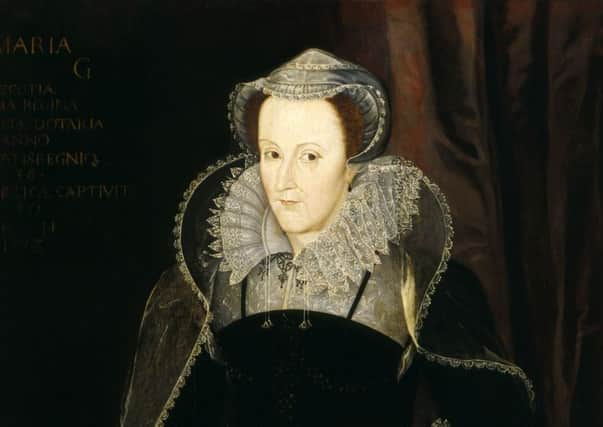Mary, Queen of Scots to be honoured with festival


Now Mary, Queen of Scots is to be honoured with her own festival, in the setting of one of her most traumatic episodes.
Plans have been unveiled for an annual event aimed at attracting thousands of visitors to Kinross-shire, where Mary was imprisoned for a year at Loch Leven Castle.
Advertisement
Hide AdOne of Scotland’s leading cultural heritage groups will stage the Mary, Queen of Scots Festival, which is hoped to become a major new attraction for the area, which has lost the T in the Park music festival this summer after 18 years.
It will pay tribute to the tumultuous life she led before being executed on the orders of her cousin Elizabeth, the English queen she was accused of trying to overthrow.
Up to 40 costumed characters will take over the town of Kinross over a weekend in September to depict what life was like in the court of Mary, who ruled for just six years in Scotland, from 1561 to 1567.
Live music, a food and drink showcase, displays with horses and falconry, and a recreation of a 16th century encampment are lined up for the event, staged this year in an arena in the Market Square in Kinross.
Plans have already been drawn up for a second, larger-scale event in 2016, which will be held in the Kirkgate Park, on the shores of Loch Leven, with its castle accessible only by boat.
Mary was imprisoned in the castle and forced to abdicate in favour of her one-year-old son after failing to quash a rebellion of Scottish peers.
Advertisement
Hide AdShe escaped and fled to England, where she would face 19 years of captivity, before a secret plot to topple Elizabeth was uncovered.
The inaugural festival, which will be held from 11-13 September, is being launched by tourism leader and event organiser Thomas Moffat, who was previously involved in a Robert the Bruce festival and an “Andrew Carnegie Day” in Dunfermline.
Advertisement
Hide AdThe new event is being run in partnership with the Clanranald Trust, a culture and heritage which has staged historical events and re-enactments, including last year’s Battle of Bannockburn celebrations.
It has also worked with Hollywood stars like Russell Crowe in the past, with recent projects including the American TV show Outlander, which is being filmed across the country, and the new big-screen version of Macbeth, starring Michael Fassbender, which wowed the critics at Cannes earlier this year. Mr Moffat said: “Mary was and is such a huge Scottish figure. With her being imprisoned her and Kinross being right in the heart of the country, it just seemed like a really obvious event to do.
“We’re focusing on a slightly smaller event in the centre of town this year to make sure we get all the logistics right, but the plan is to develop and built it up in the next few years.
“I’ve worked with Clanranald for many years, we know and trust each other, and they are really enthusiastic about it.
“The Belhaven Brewery and Perth and Kinross Council have already come on board to support the event in its first year.”
Troubled life of an heir to two thrones
Mary was born at Linlithgow Palace on 8 December 1542 to James V, King of Scots, and his French second wife, Mary of Guise.
Advertisement
Hide AdShe was also the great-niece of Henry VII of England, giving her a crucial claim to the throne.
James V died just six days after the birth of his daughter, who was crowned Queen of Scots at Stirling Castle on 9 September 1543. She was sent to live with the royal famly in France when she was just five and became, briefly, queen of the counry before her young husband, Francois, died.
Advertisement
Hide AdA widow at just 18, Mary returned to Scotland where, as a Catholic in a country that was now Protestant under the reforms led by John Knox, she was regarded with suspicion by some of her subjects.
Mary accepted the Protestant-led government and initially ruled with moderation. But a tragic chain of events followed a decision to marry her second cousin, Henry Lord Darnley. When he was murdered and Mary married the chief suspect, the Earl of Bothwell, months later, she sparked widespread revulsion.